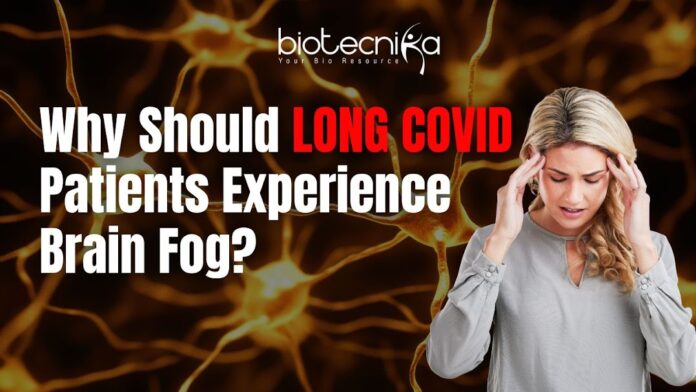
Why Long COVID Brainfog? The Biology of Long COVID Brain Fog: Why a Hyperactive Brain Receptor Can Be the Cause of Long COVID Brain Fog, Says a Study
Introduction: Feeling Like Wading Through Fog When One Sets Mind to Work
The question Why Long COVID Brainfog? Answer is here ,Months after recovering from COVID-19, millions worldwide continue to be beset by an inability to think clearly. They are “mentally slowed down,” can’t keep their head around what to say, or get easily sidetracked with trains of thought when speaking. Doctors and patients have been mystified by this post-COVID-19 brain fog, which has become widespread known as that.
Researchers at Japan’s Yokohama City University have possibly discovered the solution to a gigantic mystery hidden inside the brain’s communication system. In their latest paper, which was published in Brain Communications in October 2025, a leading culprit of the cognitive symptoms in most Long COVID patients is an overactive brain receptor called AMPA.
Why Are AMPA Receptors Important and What Do They Do?
Imagine your brain as a vast city of neurons with billions of “bridges” of information connecting them together. When sending messages, the bridges employ chemical messengers in the form of neurotransmitters. The surface of a neuron has AMPA receptors on it that dictate how intense a message is. If the amount of AMPA action is perfectly balanced, our brain can learn, remember, and respond well.But it becomes too boisterous and interferes with the subtle rhythm of the brain when such receptors become hyperactive.
The Study: Searching for the Long COVID Brain
The study with the question Why Long COVID Brainfog? tells ,Researchers used brain scans to look at the brains of 30 Long COVID brain fog patients and compared them with those of 80 healthy participants through a new method of brain imaging called PET imaging with a new kind of tracer called [¹¹C]K-2.The outcome was dramatic: levels of AMPA receptors were substantially higher in the brains of patients with long COVID, particularly in areas that are a component of memory, attention, and decision-making. These were not minor variations; they were done in virtually all areas of the brain responsible for thinking and learning.
When we receive new information, AMPA receptors will cause the neurons to cement themselves in their synapses. But neurons are hyper stimulated when these types of receptors continue to increase. The brain processes static and not cleaner signals. As the researchers explain, this hyperstimulation can be the reason why the brains of patients with Long COVID are tired and not focused.
Inflammation: The Overlooked Link
COVID-19 causes severe inflammation all over the body, not only in the lungs. From the study, those whose blood had more inflammatory chemicals (such as TNFSF12 and CCL2) also had more AMPA activity in their brains. This makes us assume that hyperactivity of the immune system and inflammation are what could be driving brain receptors into hyperactivity and also deranging the natural equilibrium of the brain.
The Significance of The Study
It is the first study to provide at a molecular level evidence that brain fog is a result of receptor change and not just blood flow or brain structure. It demonstrates cognitive symptoms of Long COVID are based on actual biological change, and not psychological. Most importantly, it is offering a new treatment and diagnosis line. Doctors can use the PET scan to see who among the patients is most vulnerable to brain receptor imbalance and if the drug will be successful or not.
A Glimmer of Hope: AMPA Receptors in the Spotlight
Medication is also being suggested. There are just too many AMPA receptors already silenced by several existing drugs, among them perampanel, an anti-epileptic drug. Researchers are now trying to see if the same strategies will cure brain fog safely. Targeted treatment of brain fog cognitive Long COVID could be the result early on, if the efficacy is established. What Scientists Will Do Next ? Although their findings are promising, experts caution that this is ultra-early research. The study was very small and conducted only in Japan. There will be bigger international studies that will determine whether AMPA changes occur in other groups as well.
Future studies will measure whether or not AMPA function returns to normal once patients recover, and how it evolves over time.
The Takeaway
One of the most infuriating and overlooked Long COVID symptoms is brain fog. But at last, researchers are getting a look at what’s happening at the molecular level with advances in brain imaging. The advance proposes that our brains are plugged up rather than “forgetting.” One day we may maybe be able to inject sanity into millions of people who live in the smog by rejiggering how neurons talk to one another.






















